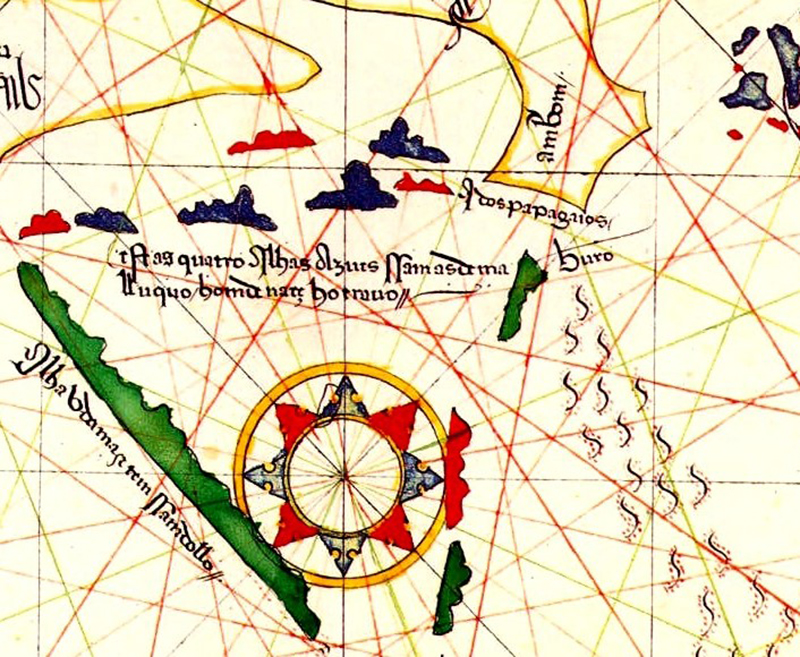On April 27, 2021, five hundred years have passed since the death of Fernão de Magalhães. This is a good time to clarify a misunderstanding that is associated with the name of the Portuguese navigator, that he was responsible for organizing the first circumnavigation trip around the globe.
This is an erroneous idea, which needs to be corrected, since at no point in Magalhães's known experiential journey is it possible to associate him with such a navigation project.
By those years, the Portuguese had discovered the sea route to India (1498), which they had exclusive control of, as a consequence of the Treaty of Tordesillas, signed with Spain a few years earlier.
In India, the Portuguese established bases that allowed them to participate in the trade of exotic oriental products. And, from the outset, they tried to reach the places of production of the most valuable goods, such as the islands of Maluco, in present-day Indonesia, which were reached in 1512, and where cloves and nutmeg were produced.
Fernão de Magalhães himself spent a long time in the Orient, between 1505 and 1513, participating as a man-at-arms in the construction of the Portuguese maritime empire.
Back in Portugal, and for somewhat obscure reasons, Magalhães was refused by King Manuel I his request for an increase in the pension to which all noblemen were entitled, after serving in the royal navies or armies.
He then outlined the project of navigating to the Maluco Islands by a western route, assuming that there would be, in the south of the American continent, which was then being explored by the Portuguese and Spaniards, a gateway to the Orient. This route, of course, could not interest the Portuguese Crown, which already dominated the sea route to India.
Fernão de Magalhães left Portugal in 1517, and went to present his navigation project to Carlos I of Spain, who immediately approved it, as he saw the possibility of implementing the plan formulated by Christopher Columbus a few years earlier, reaching Asia by sailing to West, but without infringing the provisions of the Treaty of Tordesillas.
Magellan left Seville in 1519, with an armada of four ships, with the sole aim of reaching the Maluco Islands and claiming them for the Spanish Crown.
He effectively discovered the strait that today bears his name and, crossing the Pacific, reached the archipelago of the Philippines, where he would die on the island of Mactán, in a confrontation with local populations.
The circumnavigation trip would be completed in 1522, under the command of his collaborator Juan Sebastián Elcano; but Magellan himself had never devised such a project.
Author Rui Loureiro, Historian, Director of Instituto Superior Manuel Teixeira Gomes
Help us to do the Sul Informação!
Contribute your donation so that we can continue to make your journal!
Click here to support us (Paypal)
Or use our IBAN PT50 0018 0003 38929600020 44



















Comments